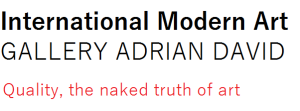
Kees van Dongen, charcoal, 1905
The Dutchman Kees van Dongen, who lived mainly in Paris, was one of the most important artists of Fauvism. There he united with other Fauvists through the bright use of colour and the unnatural form of his subject. With his early expressionism he demonstrates an energetic struggle for freedom in painting. Van Dongen had a weakness for feminine beauty, became the painter of their voluptuous bodies and made portraits of ladies from the mundane class.
This wild donkey stomping around dates from the time when a French critic called them wild beasts (les fauves) for their unconventional painting style in form and colour. Kees van Dongen and Henri Matisse, at the origin of this new movement, regarded their insulting title as a tribute. Fauvism marked the start of the official recognition of modern art, which marked the end of the sophisticated painting and sculpture techniques of the time.
– For more works by this artist, contact the gallery. –
